#soilnutrient
Explore tagged Tumblr posts
Text
Biochar Market Innovative Trends: Size, Share, and Growth Report
The global biochar market size is expected to reach USD 1350 million by 2030, registering a CAGR of 13.9% from 2024 to 2030, according to a new report by Grand View Research, Inc. Globally increasing demand for the product in organic farming has been a major factor influencing the growth. In addition, increasing consumption in livestock feed and awareness pertaining to benefits of biochar as soil amendment are expected to drive the demand. Biochar is an evolving industry and is anticipated to become a major influencing factor in increased crop yield and productivity of the agriculture sector. It improves soil fertility and provides necessary nutrition to crop. Moreover, applications in energy production and greenhouse gas remediation are expected to provide new revenue opportunities to the sector.
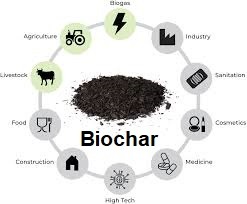
Biochar Market Report Highlights
Total product manufactured using pyrolysis technology in 2023 accounted for 65.1% market share in terms of revenue and is expected witness rapid growth over the estimated period
Asia Pacific is expected to witness extensive growth in the forthcoming years due to increasing application of the product in livestock feed and organic farming
Pyrolysis technology is increasingly used by Earth Systems and Clean Fuels B.V. among other manufacturers operating in the biochar market.
For More Details or Sample Copy please visit link @: Biochar Market Report
The market consists of organized and unorganized manufacturers. Growing economies such as China, India, Japan, Mexico, and Brazil produce significant amount of biochar through small and medium scale industries mainly running into village areas. Whereas, large scale manufacturers are concentrated in North America.
Consumption in agricultural application was the highest in 2022 and is anticipated to rise significantly over the forecast period. Among various applications in agriculture, farming held the highest market share in 2022.
In terms of volume, the agriculture sector is estimated to witness speedy growth over the forecast period. It has also gained high popularity in livestock farming as an additive in animal feed. The livestock sector has gained high importance, especially in regions such as Europe and North America where animal flesh is extensively consumed by human beings as a food. As a result of this, biochar consumption is expected to grow substantially in the foreseeable future.
#Biochar#WasteManagement#Biogas#WasteEnergySolutions#Fertilizer#OrganicFarming#BiodynamicAgriculture#SoilNutrient
0 notes
Text
#PotashFertilizers#Agriculture#CropProduction#SoilNutrients#FertilizerIndustry#AgriculturalInnovation#SustainableFarming
0 notes
Text
"Quick and Simple Preparation Guide: Carbonized Rice Husk"
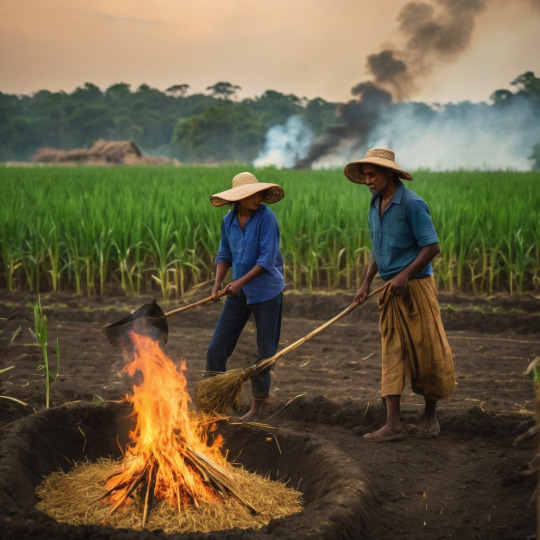
👋Hey friends! Have you heard about carbonized rice husk and how useful it can be? If you want to make some yourself, it's actually pretty easy and straightforward. Here's a quick rundown of what you'll need and the basic steps:
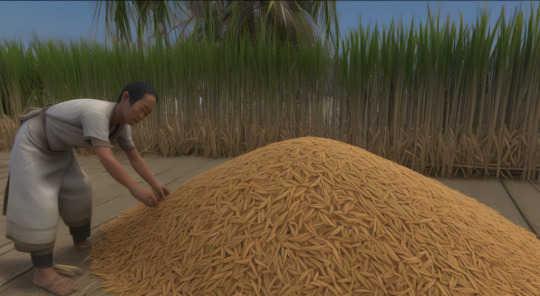
We also have a detailed video on this same topic that you can explore for a more visual guide to the process. 👇 https://youtu.be/dTeg0niPGKc what carbonized rice husk is?Rice Husk is the outer cover of rice grains. Farmers remove it during processing. Normally it's just burned as waste. But researchers found we can turn it into something useful! By burning rice husk in a special way with minimal oxygen, it becomes "carbonized". However, on the other hand, this process causes certain parts to turn black and remain solid instead of burning. Carbonized rice husk, also called biochar, is good for soil. It helps the soil hold more water and nutrients. Plants grow stronger with carbonized rice husk in the dirt. Using Carbonized Rice Husk for Plants: It's easy for farmers to make. You just need a container to burn rice husk in slowly. Then the black chunks left over are carbonized rice husk. How can carbonized rice husk be beneficial for plants?Carbonized rice husk serves as an excellent growing medium due to its lightweight nature, high porosity, enhanced water retention, improved drainage, and sterile properties. It also provides a pH-neutral environment for plant growth and offers good aeration and resistance to decay. These properties make it an ideal choice for sustainable and organic gardening practices. What are the properties of carbonized rice husk that make it suitable for plants?The physical and chemical properties of carbonized rice husk, such as its lightweight nature, increased porosity, and ability to absorb foul odors, contribute to its effectiveness as a soil medium. Its resistance to decay and neutral pH further enhance its suitability for promoting healthy plant growth. Are organic fertilizers suitable for use with carbonized rice husk? Is Leaf Mold compost beneficial in conjunction with carbonized rice husk?Yes, leaf mold compost can be highly beneficial when used in conjunction with carbonized rice husk. The combination of leaf mold compost and carbonized rice husk offers a sustainable and nutrient-rich environment for plant growth. Leaf mold compost enriches the soil with organic matter, promoting the growth of beneficial microorganisms and enhancing soil fertility. what is the ratio of organic fertilizer we can add to carbonized rice husk?The ideal ratio will depend on factors like soil needs, crop demands, compost nutrient levels, and production goals. Start with lower ratios and monitor impacts. For example, with 4% carbonized rice husk, use 2-3% compost. With 10% carbonized rice husk, use 1-2% compost. Adjust as needed based on soil tests. In Quick and Simple Way we have presented a video on the same topic👇. https://youtu.be/b66cfx6Jlhw
Step-by-Step Quick and Simple Preparation Guide:
Acquiring the Rice Husk: Begin by sourcing high-quality rice husks from local rice mills or suppliers. Carbonization Process: In a controlled environment, partially burn the rice husks to achieve a carbonized state. We can do this using a special oven or a special machine called a pyrolysis unit. For Home Gardeners, you can make this yourself at home with Quick and Simple steps. Just watch the video by Clicking Here." Cooling and Storage: Once carbonized, allow the rice husk to cool before storing it in a dry and well-ventilated area. Benefits and Applications: The carbonized rice husk presents numerous benefits, including high porosity, water retention capacity, and resistance to microbial degradation. It can be utilized as a soil amendment, a component in potting mixes, or even as an eco-friendly alternative to traditional mulch. Using Carbonized Rice Husk as a Soil Medium: When used as a soil medium, carbonized rice husk enhances soil aeration, improves water retention, and provides a stable environment for microbial activity. Its balanced carbon-to-nitrogen ratio contributes to the overall health of the soil, making it an invaluable addition to gardening and agriculture practices. Preparing Carbonized Rice Husk for Planting : Before incorporating carbonized rice husk into the planting medium, it is essential to ensure proper preparation. Start by rinsing the material to remove any impurities or dust. Soaking it in water for a brief period can also soften it slightly, making it easier to handle during mixing and planting. Incorporating Carbonized Rice Husk into Planting Medium: For a well-balanced planting medium, mix carbonized rice husk with soil or compost in a 1:1 ratio. This blend provides optimal aeration, water retention, and nutrient availability. Thoroughly integrate the components for a homogeneous mixture. Choosing the Right Plants for Carbonized Rice Husk Medium: Carbonized rice husk can be beneficial for various types of plants, particularly those that prefer well-draining soil, such as succulents, cacti, and certain herbs. It is crucial to research the specific requirements of desired plants to ensure compatibility as a planting medium. Conclusion: Using half-burned rice husks in soil is great for helping plants grow and making gardens healthier. It's an eco-friendly way to improve the soil, keep water in, give plants good stuff to grow, stop weeds, and help good tiny bugs in the soil. If you try using burned rice husks in your gardening, you'll see a big difference in how well your plants grow, and it's better for the environment too!. Learn with Quick and Simple steps. Read the full article
#carbonizedricehusk#eco-friendlysolutions#gardening#GardeningTips#HouseplantCare#LeafyGreens#organicgardening#PlantGrowth#soilenhancement#soilnutrients#sustainableagriculture#sustainableecosystems#UrbanGardening
0 notes
Text
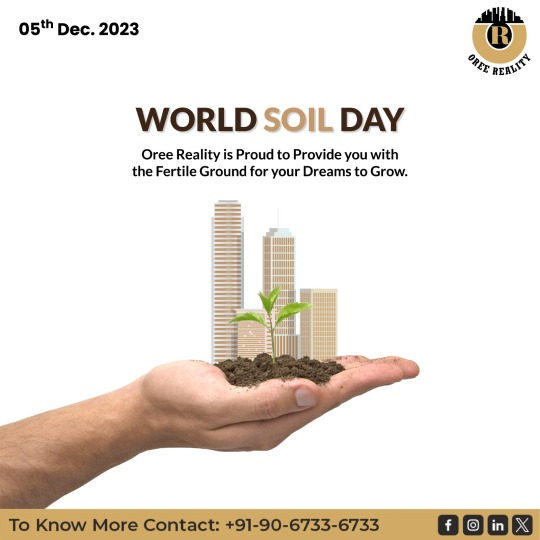
Celebrating World Soil Day with Oree Reality – where every property is rooted in quality and growth. . . . Contact us at-+91-90-6733-6733 . . . #Oreereality #Cloud51 #ModernLiving #RealEstate #Realestatepune#GreenLiving #3BHKFlatBavdhan #PrivateGarden #CityscapeLiving#Realestatecompanypune #RealEstateInvesting #2BHKFlat #3BHKFlat #RealEstateLife #Amenities #WorldSoil #SoilHealth #HealthySoils #SaveOurSoil #SoilConservation #SoilMatters #Soil #SoilDay #SustainableAgriculture #SoilErosionAwareness #SoilNutrients #ProtectOurSoil #SoilDay2023 #WorldSoilDay #WorldSoilDay2023
0 notes
Text
Soil Sterilization with Nano Silver Hydrogen Peroxide | Agro Chemicals | Chemtex Speciality Limited

Alstasan Silvox is the Unique Antimicrobial Solution for Agricultural Industry. With its powerful properties, Alstasan Silvox eradicates harmful pathogens and helps to reduce the risk of crop diseases, allowing plants to grow in healthier environments and revolutionizing agricultural practices for a more sustainable future.
#silverhydrogenperoxide#nonosilverhydrogenperoxide#soilsterilization#farmers#agriculture#gardening#soildisinfectant#silvox#soil#nature#organic#plants#soilhealth#growing#soilfumigation#agrochemicals#agrofertilizer#soiltreatment#fieldcultivation#soilnutrient#chemtex#chemtexspecialitylimited
1 note
·
View note
Text
How to make healthy soil for planting vegetables in your garden?

Preparing Healthy Soils is the foundation of healthy gardens
You need to prepare your soil to properly plant your crops, as you prepare to move into a new garden business. The best thing you can do in the soil preparation process is to achieve a perfect mix of silk, clay, and sand. Preferably 40% silk, 40% sand, and 20% clay. There are many tests used by experienced farmers to determine if the soil is well-formed. First, you can press it on your hand. If it does not hold its shape and collapses without external force, your sand rate is probably slightly higher. Your soil contains a lot of clay if you dig a compressed spine with your finger and it does not fall easily.
See also: Gardening Ideas to Grow Onions at Home
Soil preparation process: mud, clay, and sand
You can subdivide each component using this simple method if you are unsure of the content of your soil. Put a cup or two of dirt in a pot of water. Stir the water until it is temporarily suspended, and then place it until you see it separated by 3 different layers. The top layer is clay, the next is a slump, and the bottom is sand. You should be able to judge the presence of each component within your impurities, and then act accordingly.
If you decide that it is low for a particular ingredient you should definitely do something to fix it, after analyzing the content of your soil. If you are working with too much sand or mud, it is best to apply peat moss or compost. If you find a lot of clay, add a mixture of sand and peat moss. Peat moss, along with moistens, helps the new environment to absorb the mixture well. Just go down to your garden store, if you can’t manage to find the right mix. You need to be able to find a specific type of product that will help you.
The water content of the soil is another important factor to consider when preparing your garden. If your garden is down the slope, it is more likely to immerse and water the plants. If so, you should probably raise your garden a few inches (4 or 5) above the ground. This will allow for very little saturation and drainage.
See also: Best 20 crops to grow in black soil
Soil preparation process: Nutrients
Adding nutrients to your soil is also a very important part of the process, as most urban soils have little or no nutrients in them naturally. One or two weeks before planting, you should add a good amount of fertilizer to your garden. Mix very well and sit for a while. Once you have done this, your soil will be fully prepared for any seed you can plant in it.
Once your seed has been planted, you still want to pay attention to the soil. In the first few weeks, the seeds misuse all the nutrients around them to grow into a real plant. If they run out of food, how should they grow? About a week after planting, you should add the same amount of fertilizer you have added before. After this you should continue to use fertilizer, but not always. If you add a little every two weeks, that should be a lot to keep your garden thriving.
Basically, the whole process of soil care can be summed up in just a few steps. To ensure that the soil structure is satisfactory, make sure you have proper plumbing in your garden, add fertilizer before and after planting and apply fertilizer several times afterward. Follow these simple steps, and you will have an abundance of healthy plants. And if you need more information on each step, just go to your local crèche and ask there. Almost all staff will be happy to give you advice.
1 note
·
View note
Photo
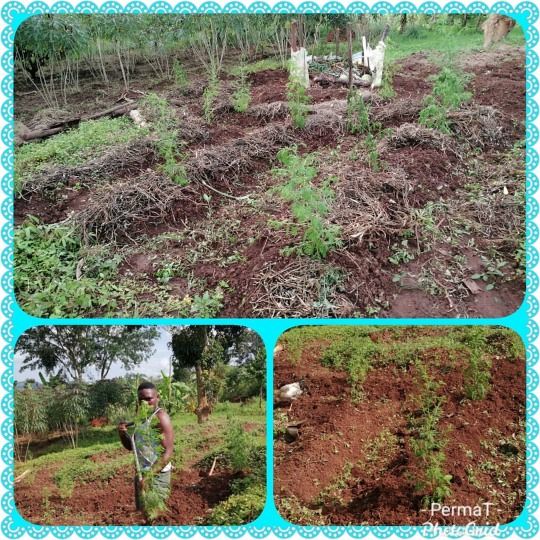
It's been a while since we last updated you on artimensia growing at Butambala Permaculture Learning Center. We transplant artimensia at 10cm after 7 weeks of sowing. #medicinalherbs #healthliving #healthiswealth #permaculturegarden #permacultureliving #permaculturelife #raisedgardenbeds #mulch#soilnutrients #regenerativeagriculture #herbgarden #herbs #organic #permaculture #nature #health#natural #love #happy #herbalist #herbalmedicine #herbalism Link in bio #peacedecemberuganda Tag a friend Share to your social networks Repost 🇺🇬 🌱 🌿⚕️☘️🌳♻️🌈😁💚🕸️ (at Butambala District) https://www.instagram.com/p/CHxwUTng06S/?igshid=so4dd9wpjmps
#medicinalherbs#healthliving#healthiswealth#permaculturegarden#permacultureliving#permaculturelife#raisedgardenbeds#mulch#soilnutrients#regenerativeagriculture#herbgarden#herbs#organic#permaculture#nature#health#natural#love#happy#herbalist#herbalmedicine#herbalism#peacedecemberuganda
0 notes
Photo

John Kempf: Developing Regenerative Agriculture Ecosystems, part 1 | SNC 2018 Pre-conference The Principles & Science of Developing... #surnativa #bionutrient #bionutrientfoodassociation #bionutrients #dankittredge #johnkempf #nutrientdense #nutrientdensefood #regenerativeagricultural #regenerativefarming #soilbacteria #soilfungi #soilhealth #soilminerals #soilnutrients #soilscience Source: https://surnativa.com/john-kempf-developing-regenerative-agriculture-ecosystems-part-1-snc-2018-pre-conference/?feed_id=29332&_unique_id=5f57bf9d8531c
0 notes
Photo

Planting season is upon us. Hope you're getting those crops and plants in some Cultiv Soils!
#soilnutrients
0 notes
Text
Carbonized Rice Husk: Rocket Your Plant Growth
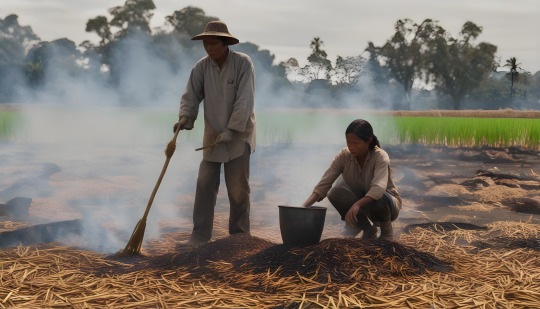
👋There, plant lovers! Have you heard about using Carbonized Rice Husk to supercharge your garden? It's a natural way to help your plants grow better and stronger. We're talking about Carbonized Rice Husk! This amazing stuff can make a real difference in how your plants thrive. Let's dive into the world of Carbonized Rice Husk and see how it can be a game-changer for your gardening journey.
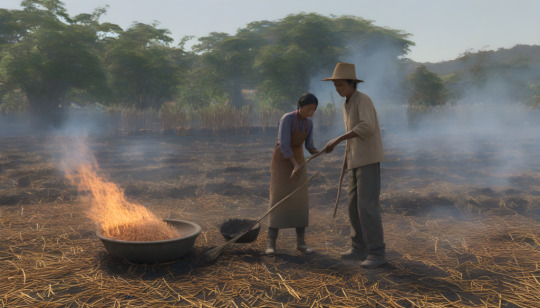
Carbonized Rice Husk Enhancing Soil Structure and Aeration:
When we talk about making soil better for plants, we sometimes use big words like "enhancing soil structure and aeration". But what does that really mean? Well, it's all about making the soil fluffier and allowing air and water to move through it. So, let's picture this: imagine you're making a cozy bed for your plants. You want to make sure it's not too packed together, right? Because just like people, plants need room to breathe! When the soil is fluffy, and not too compact, it's easier for the roots to stretch out and find water, air, and all the good stuff they need to grow big and strong. Now, let's talk about why carbonized rice husk is like a superhero for soil. It's like a magic ingredient that can make the soil super cozy for plants. When we mix it into the soil, it creates little pockets of space, kind of like fluffy clouds in the sky. These pockets let the air and water move around, making the soil just right for plants to grow happily. So, when we say "enhancing soil structure and aeration," we're really talking about making the soil feel nice and airy for our plant friends. Carbonized rice husk is like giving them the comfiest bed ever, and when plants are comfy, they can grow like little rockets shooting up into the sky! Remember, happy soil means happy plants, and with carbonized rice husk, we can turn our gardens into the best place for our plants to thrive and grow beautifully. https://youtu.be/dTeg0niPGKc By Watching This Video, You can Understand Better 👉
The Benefits of Carbonized Rice Husk as a Soil Medium
In your gardening journey, have you ever considered using half-burned rice husks to nourish your plants? A humble byproduct of rice production, carbonized rice husk is a wonder material for gardening. It's like a superhero for your soil, offering a multitude of benefits to your beloved plants and the environment. First off, using burned rice husks in your soil is like giving your plants a booster shot. It helps the soil hold onto water better, ensuring your plants stay hydrated even in hot weather. The husks also work like a shield, keeping pesky weeds at bay, so your plants can thrive without competition. Plus, they slowly release nutrients into the soil, acting as a natural fertilizer over time. But that's not all – burned rice husks support a bustling community of tiny helpers in the soil. These little friends, like earthworms and beneficial microorganisms, work tirelessly to keep your soil healthy and your plants happy. Not only is carbonized rice husk great for your plants, but it's also a win for the environment. By using a natural byproduct that would have otherwise gone to waste, you're opting for a sustainable and eco-friendly gardening solution. It's a small change that can make a big difference for your garden and the planet. Carbonized Rice Husk Improving Water Retention and Drainage: When you use half-burned rice husks in your garden, it's like a super drink for your plants! The husks soak up water like a sponge and hold onto it, so your plants won't get thirsty as quickly. Plus, they help drain extra water away, so your plants' roots don't get too soggy. It's like giving your plants the perfect balance of water – not too much, not too little. And that's the secret to having super happy and healthy plants in your garden! When you use burned rice husks in your garden, it's like a super drink for your plants! The husks soak up water like a sponge and hold onto it, so your plants won't get thirsty as quickly. Plus, they help drain extra water away, so your plants' roots don't get too soggy. It's like giving your plants the perfect balance of water – not too much, not too little. And that's the secret to having super happy and healthy plants in your garden! Nutrient Enrichment and Slow Release: When you use half-burned rice husks in your garden, it's like giving your plants a healthy meal. The burned rice husks enrich the soil with all the good stuff that plants need to grow strong and happy. They also don't release all the nutrients at once, so your plants get a slow and steady supply of food, just like eating healthy snacks throughout the day. This helps plants grow steadily and stay healthy for a long time, making your garden a green and vibrant paradise. The types of Nutrients that can be Enriched in half-burned rice husk: Carbon: Half-burned rice husk contains a significant amount of carbon, which can contribute to enhancing soil structure and promoting the growth of beneficial microorganisms. Potassium: Partially combusted rice husks may retain useful levels of potassium, which is an essential nutrient for plant growth and overall health. Silica: Half-burned rice husk can retain silica, which is beneficial for plant strength and resilience against environmental stresses. Other trace elements: Depending on the extent of burning, various trace elements and micronutrients can potentially be enriched in half-burned rice husk, contributing to plant nutrition and growth. Suppressing Weeds and Preventing Erosion: When you use burned rice husks in your garden, it helps stop weeds from growing and keeps the soil from washing away when it rains a lot. This means less work for you pulling weeds and healthier soil for your plants. The burned rice husks form a protective layer on the soil, so even if it rains hard, the soil stays in place and your plants stay happy. Plus, it's all-natural and good for the environment, so you can feel good about using it in your garden. Promoting Beneficial Soil Microorganisms: - Encourage good bugs in the soil - These bugs help plants get necessary nutrients - They also fight off harmful microorganisms - Healthy soil bugs boost plant growth and overall soil health - Using carbonized rice husk nurtures a thriving environment for these beneficial soil organisms, leading to improved plant growth and sustainable gardening practices
Step-by-Step Preparation Guide:
Conclusion: Using half-burned rice husks in the soil is great for helping plants grow and making gardens healthier. It's an eco-friendly way to improve the soil, keep water in, give plants good stuff to grow, stop weeds, and help good tiny bugs in the soil. If you try using burned rice husks in your gardening, you'll see a big difference in how well your plants grow, and it's better for the environment too! Read the full article
#carbonizedricehusk#eco-friendlysolutions#gardening#GardeningTips#HouseplantCare#LeafyGreens#organicgardening#PlantGrowth#soilenhancement#soilnutrients#sustainableagriculture#sustainableecosystems#UrbanGardening
0 notes
Photo

At Butambala Permaculture Learning Center we have added some inches of sawdust as a way of improving our soil quality. Red clay soil takes a hard work to get better into healthy soils using organic farming while decomposing materials is one of the ingredients. #organicfarming #organic #organicfood #farming #permaculturegarden #permacultureliving #permaculturelife #raisedgardenbeds #mulch#soilnutrients #organicingredients #nature #love #like #ınstagood #picoftheday #morning #peacedecemberuganda Link in bio #peacedecemberuganda Tag a friend Share to your social networks Repost 🇺🇬 🌱 💚♻️🌈🌿🕸️😇👨🌾🕸️🥑 (at Butambala District) https://www.instagram.com/p/CHvGvmaK54L/?igshid=8so9jxtp8trp
#organicfarming#organic#organicfood#farming#permaculturegarden#permacultureliving#permaculturelife#raisedgardenbeds#mulch#soilnutrients#organicingredients#nature#love#like#ınstagood#picoftheday#morning#peacedecemberuganda
0 notes
Photo

We're transforming this soil into regenerative market gardens with raised beds, terraces, contours. Working with red clay soils takes some energy and time to reach that standard but if you're patient and incorporate organic manure and feed it health i bet you will be happy with its productivity. #permaculturegarden #permacultureliving #permaculturelife #raisedgardenbeds #mulch #soilnutrients #homestead #homesteading #sustainability#sustenteble #healthyfood #ediblelandscape #growyourownfood #foodwaste #soilscience #soilhealth #homesteadinglife #permaculturedesign #gardenplanning #senseofpurpose #takeaction #sunday #goodmorning Link in bio #peacedecemberuganda Tag a friend Share to your social networks Repost 🇺🇬 🌱 🏞️🌍🌿🕸️🐞🐦🌈💩 ♻️ (at Butambala District) https://www.instagram.com/p/CGdeFW4gY7i/?igshid=1k63xw9r9nykf
#permaculturegarden#permacultureliving#permaculturelife#raisedgardenbeds#mulch#soilnutrients#homestead#homesteading#sustainability#sustenteble#healthyfood#ediblelandscape#growyourownfood#foodwaste#soilscience#soilhealth#homesteadinglife#permaculturedesign#gardenplanning#senseofpurpose#takeaction#sunday#goodmorning#peacedecemberuganda
0 notes
Photo

Indigenous pumpkin is a key to our climatic adaptation, makes good seeds when dried, its a cover crop and provides nutrients to the soil. #permaculturegarden #covercrop #permaculturelife #permaculture #climatemitigationandadaptation #soilnutrients #homestead #homesteading #sustainability#sustenteble #healthyfood #pumpkinsoup #greencover #permakultur #saturdatvibes #saturday #resilience #permaculturesector39 #nature #life #instagardeners #instagood #greenthumb #growyourownfood Link in bio #peacedecemberuganda Tag a friend Share to your social networks Repost 🇺🇬 🌱 🎃 🌈🕸️😊🌿🍍🗺️🌐🤘 (at Butambala District) https://www.instagram.com/p/CGcwyaXA7c6/?igshid=pa8r3wqov27i
#permaculturegarden#covercrop#permaculturelife#permaculture#climatemitigationandadaptation#soilnutrients#homestead#homesteading#sustainability#sustenteble#healthyfood#pumpkinsoup#greencover#permakultur#saturdatvibes#saturday#resilience#permaculturesector39#nature#life#instagardeners#instagood#greenthumb#growyourownfood#peacedecemberuganda
0 notes
Text
Tuesday Tip
I #remember# doing# # soil#sampling#on #my #first #regionalism # travel# to #Kenya@ Bungoma # tohelp one Jordan #Orphanage# Center to start #permaculturesolutions as wellas #shareknowledge about #sustainable #regenerativegardening that would guarantee #sustainableagriculture #foodsecurityisfreedom
#mulchingsolutions#covercropping#compositing #benefits#of #healthysoilhealthyplanet #composttea #resiliency
When the soil #dry it lucks nutrients and if soil has warmth and dark in color its fertile with #soilnutrients required to grow #healthycrops . As #smallscalefarmer and #futurefarmers we must understand that soil is where food comes from not plants inorder to use less synthetic chemicals to our plants.
We #peacedecemberuganda #encourage #foodsecurity
Link in bio
To join us, follow us, like us, support us, Tag a friend 🇺🇬🇺🇬🇺🇬🇺🇬🌻🌳🌻🙏🌈🌍♥️🌎♥️🌏♥️🐌🐝🌱🦋🌼🐞🕸️👋🤝💪
https://www.instagram.com/p/CAGKsAtArPN/?igshid=11xnsitsojhdb
0 notes